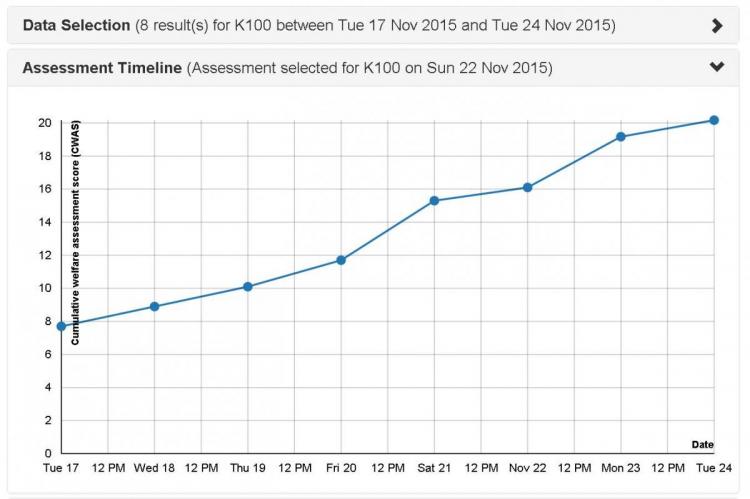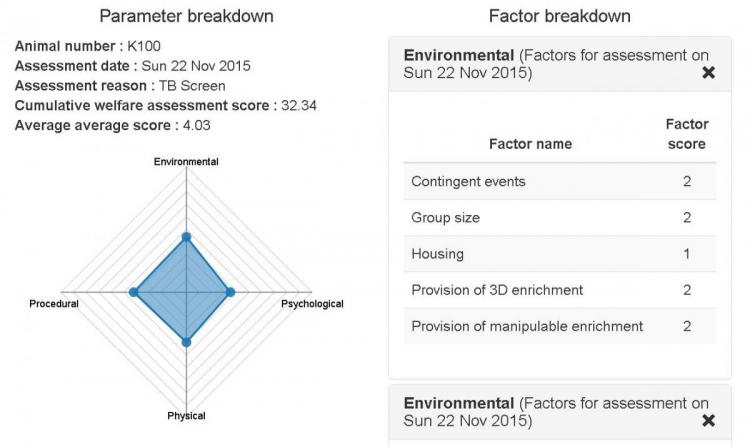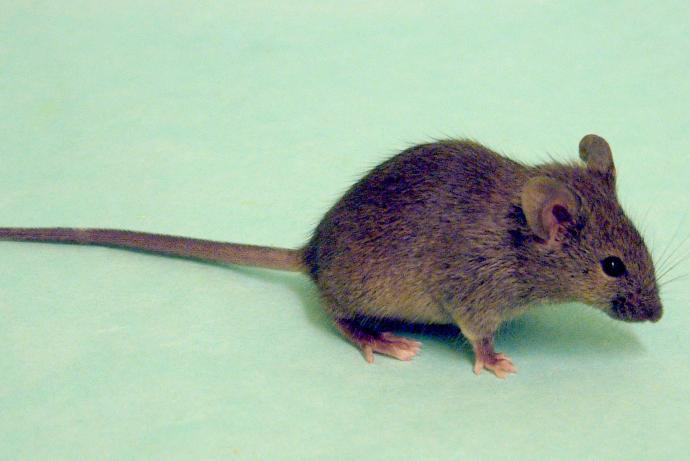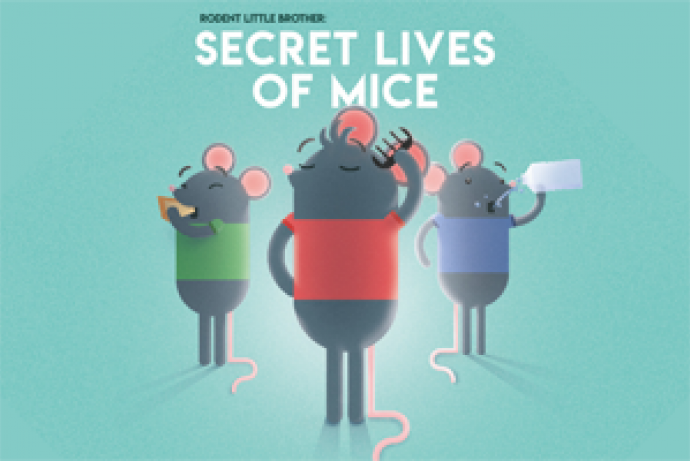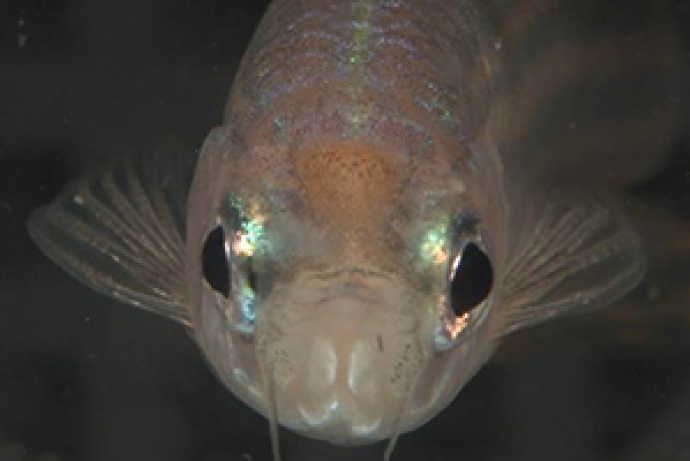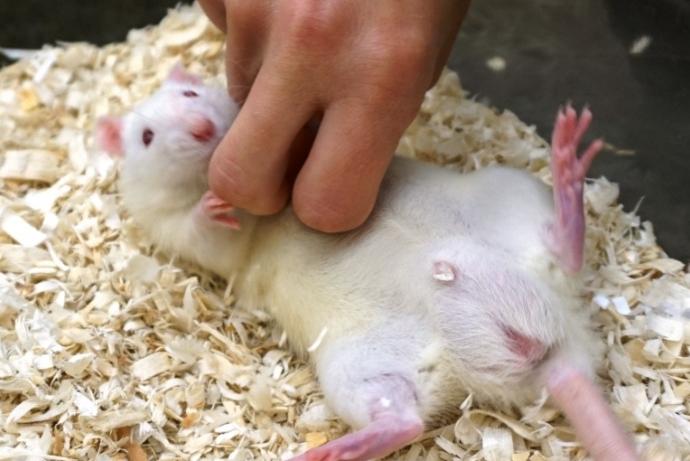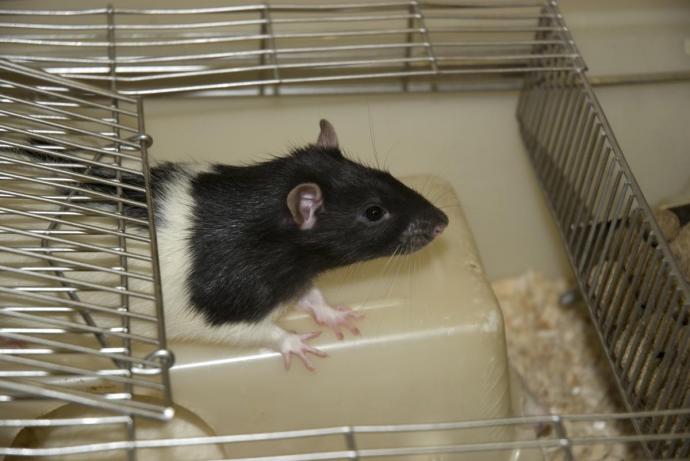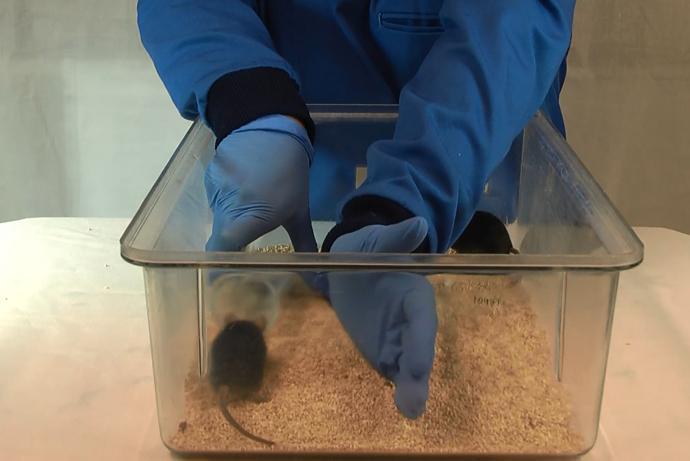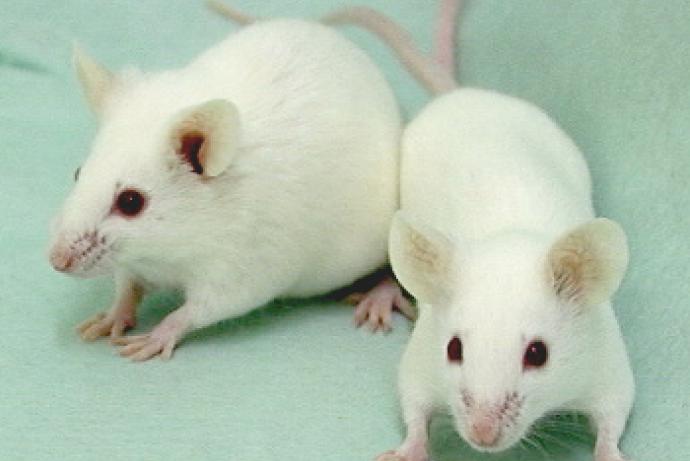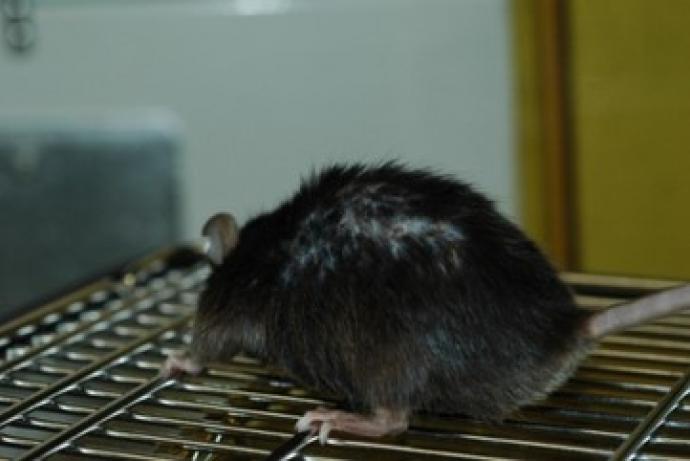The Animal Welfare Assessment Grid (AWAG) system is a web-based software application designed for capturing, storing and visualising animal welfare assessment data. Further development is required to refine the system and make it applicable to a wider range of applications in the research community where the system has potential to improve animal welfare. Potential partners should be interested in adopting and trialling this approach to animal welfare assessment, and willing to provide feedback to support refinement of the system. Input from partners who could provide additional developer resource to help incorporate the required changes into the software and support development of different platforms (e.g. smart phone app) would also be welcomed.
The Solution provider has been awarded CRACK IT Solutions funding to collaborate with the Veterinary Health Innovation Engine (vHIVE) to improve the usability and uptake of the AWAG tool.
Assessment of animal welfare is essential, not only to meet legislative requirements for review of severity but also to identify areas where the experience of an animal can be improved in terms of environment or by refinement of experimental techniques, leading to less variable data from the use of less stressed animals. Ethical review bodies in the UK are required to assess projects both prospectively and retrospectively for application of the 3Rs but it is currently difficult to present meaningful data that can highlight areas where improvements have or potentially can be made.
There are systems available commercially for managing the more general data related to animal management but these don't extend to capturing welfare data in the way AWAG does. These systems are designed to produce reports on animal usage, training and staff competency for example. Incorporating the AWAG in to these existing systems would add the ability to evaluate and quantify welfare in a way that can be easily used by ethical review bodies and by project licence holders required to assess and report annually on the actual severity experienced by each individual animal during a particular study.
AWAG is a unique software system for assessing the lifetime experience of individual or groups of animals as it allows welfare to be quantified and presented graphically to highlight key events that affect well-being. The system was developed by Public Health England in collaboration with the University of Surrey, School of Veterinary Medicine.The system uses four parameters that impact on welfare, namely physical well-being, behavioural and psychological well-being, environmental conditions, and experimental and clinical events. Each parameter is subdivided into several factors that contribute to the overall score for a particular parameter. At each assessment, a score is entered for each factor and is added to give an overall welfare score between 1 (optimal) and 10 (worst possible case).
AWAG is designed to be installed on an organisation’s IT infrastructure and then accessed via a web browser from any device. The system authenticates and authorises its users, and logs all actions for quality/audit purposes. The software can produce graphs and reports on the welfare state throughout the animal’s life (see Figures 1 and 2 below). At each time-point on the graph the software allows interrogation and depiction of each factor contributing to the overall score. Thus it is easy to see which factors/ parameters have contributed to the changes in the welfare status of an animal. This allows changes to be made that will improve welfare, such as refining experimental techniques, improving caging environments, optimising group sizes or providing enrichment.
Figure 1: Graph showing cumulative assessment score over time.
Figure 2: Score breakdown for a single point in Figure 1.
The AWAG system is a tool for internal assessment in any setting where evaluating and improving animal welfare is important, to indicate where improvements can be made to the 3Rs within an establishment; for example, in terms of experimental design and application of earlier evidence-based decisions on humane end-points. AWAG can also be used for regulatory required reports of animal welfare, for example the UK Home Office require annual reporting on the actual severity of procedures conducted on experimental animals. This system would improve the consistency and ease of reporting of such assessments.
Further collaboration is required to strengthen transferability of AWAG to as wide a field of experimental disciplines as possible. Potential partners should be interested in adopting this approach to animal welfare assessment, able to trial the software in an operational environment and willing to provide advice and feedback to support refinement of the system. Physical access to facilities should not be required but staff time will be needed to enter assessment data into the system, provide feedback and complete questionnaires. No specific skills are required to use the software but local ICT support may be required to install the software, though PHE can provide assistance here if required.
Input from partners who could provide additional developer resource to help incorporate the required changes into the software and add additional features and support for different platforms (e.g. smart phone app) would also be welcomed. This could include easier installation, streamlined data entry, additional data analysis and graphing options, and potentially a smartphone/tablet version of the software.
PHE is also seeking partners interested in utilising the software as a complementary component or ‘bolt-on’ to an existing bespoke or commercial data management system. For example, to provide an additional ‘welfare module’ that would add value to their existing product.
AWAG allows assessment of lifetime experience imposed by the various events and management changes that occur throughout an animal’s life. It allows objective feedback on changes affecting welfare, enabling the user to drill down to the separate components that, in combination, affect animals’ well-being. The system produces a visual representation that is easily understood, encouraging communication about welfare and highlights where improvements can be made. This allows specific areas to be identified as the particular cause of any change in welfare, enabling refinements to be focused appropriately to maximise improvements. Use of the system recently provided supporting data for work to optimise a non-human primate BCG challenge model for selection of candidate tuberculosis vaccines that has the potential not only to replace the more severe TB challenge model but also to allow clinical assessment of novel vaccines to be conducted in human volunteers (Wolfensohn et al., 2015).
By combining retrospective and prospective analysis of welfare, AWAG can assist in making difficult quality of life decisions about an animal or group of animals. It provides indicators on how the well-being of animals can be improved and demonstrates to regulators, ethical review bodies or welfare groups that a proactive approach is being taken and that effective action is resulting in the delivery of improved husbandry and care.
References:
- Wolfensohn S, Sharpe S, et al. (2015). Refinement of welfare through development of a quantitative system for assessment of life time experience. Animal Welfare 24(2):139-149. doi:10.7120/09627286.24.2.139.
Overview
With the support of CRACK IT Solutions funding, PHE is now working with the Veterinary Health Innovation Engine (vHIVE) to develop the tool by:
- Improving the ease of installation and setup of the software, making it more accessible for individual users and small companies.
- Updating the user interface to ensure maximum usability and an intuitive, user friendly layout.
- Streamlining the data entry to ensure it is quick and easy to upload data from large studies, by incorporating bulk import of data and enabling bulk entry for groups within studies.
- Exploiting the interoperability of the system to enable interaction with existing animal information management systems to avoid users duplicating the data input on other systems.
To ensure the tool aligns with the requirements of the animal welfare community and the diverse species used, this project will establish a user forum to enable two-way communication and a feedback channel with the user base. The user forum will comprise academic, pharmaceutical and other animal facilities that use different species ranging from rodents to non-human primates. The user forum will get access to the AWAG tool as it is developed to test the modifications meet end user needs. The PHE team is keen to hear from researchers, animal care staff, veterinarians, etc., who are interested in participating in the user forum – please contact the CRACK IT team if you would like to know more.
Impact
Significant progress was made against each of the key milestones specified above.
The latest version of the software, incorporating all the new features and improvements added as part of this project, is available here: https://github.com/PublicHealthEngland/animal-welfare-assessment-grid/wiki.
Architecture and installation:
Automated installation packages have been developed so that the application can now be installed automatically in just a few minutes, removing much of the complexity involved in installing and configuring the software. In addition to this a Docker image for the AWAG tool is also available. This is a packaged-up version of the application which includes all the components needed to run it and can easily be dropped onto any system with Docker installed. Like AWAG, Docker is an open source product available to download free of charge.
Improving the user interface:
A number of user interface improvements have been implemented based on feedback collected from the user base and from the recommendations of two reviews of the user experience carried out by vHive. These reviews focused specifically on evaluating the user interface and the functionality of the AWAG tool on mobile devices. The latter was particularly important as most end users are likely to use a tablet for data entry from the cage side. The improvements implemented included changes to the screen layout ensuring a logical flow for all user controls, re-organising menu options, improving visibility of data already entered into the system, adding extra validation to ensure data quality, reviewing and updating all on screen text and wording where recommended, changing the presentation order of the template parameters, adding more meaningful success/error messages and resolving issues identified with tablet display.
Streamlining data entry:
Several new features have been included in the updated version of the AWAG tool to support more streamlined and efficient data entry. These include:
- The scores for welfare factors, such as ‘housing’ or ‘group size’ can now be auto-generated from the values of the last assessment. This significantly speeds up data entry as sometimes only one or two welfare factor scores may have changed since the last assessment.
- Data can now be added for study groups as a whole as well as for individual animals.
- CSV data import function has been integrated for all data entities, including animals, assessment data, housing conditions etc.
Interoperability:
A full system API (Application Programming Interface) has been developed to enable other software systems and animal information management systems to programmatically interact with AWAG. This avoids users having to duplicate data input on other systems, making the process more efficient and reducing the chances of data being input incorrectly across systems. In addition to this, to help other developers easily use the API, interactive documentation has been produced using widely adopted Swagger open-source framework software.
User feedback channel:
A user forum was established to enable easy user testing and feedback to support development of the AWAG tool. The list comprised contacts already known to AWAG developers and new ones developed during the project and represented over 50 organisations including universities, government departments and private sector companies. Several approaches to engage with the user forum were adopted. These included user surveys to gather information on areas of research, species used and what other IT systems and databases end users employed; hosted demonstrations of the system at establishments of end user forum members; and targeted trials to assist with the development of welfare scoring factors for species other than primates, including mice, horses, pigs and cattle.
The knowledge gained through discussion and feed-back during use of the system has allowed the software developers to enhance the flexibility and utility of the system. This has had the effect of defining the need to programme in flexibility of the scoring factors that contribute to each welfare parameter such that they can be used for different species and in a wider range of scientific disciplines. The incorporation of this flexibility will allow the AWAG system to be adopted by the widest possible range of users within the industry, who have research models of different species and areas of investigation. Thus, as new models are introduced the system will be able to be modified to meet the needs of all potential users.
Applying the AWAG tool allows researchers to assess the welfare of animals throughout their lifetime, offering opportunities for refinement and potentially reducing their animal numbers overall. The approach can identify factors that have a negative or positive impact on welfare, enabling changes to be made during current work or in future studies. Quantification of welfare changes can provide evidence that will prompt discussion between care staff, licence holders and named persons on study design, housing and procedural interventions that will improve welfare and the quality of science. Improvements can then be demonstrated to regulators, funders and ethical review bodies to give reassurance of best practice.
The changes made to the system during this project to improve its ease of use and functionality will enable more groups to adopt the AWAG tool and maximise the 3Rs and scientific impacts of the approach. Use of the system within PHE has demonstrated how refinements have been achieved through improvements in housing, group structure, use of baseline data collection in breeding colonies rather than transfer to containment facilities and in use of surrogate (non-pathogenic) challenge models in vaccine evaluation. In all, we have been able to demonstrate that these changes have improved the welfare of approximately 300 macaques. In particular we have now been able to adopt a policy of conducting important non-infectious studies entirely within the colony environment without the need for transfer to an experimental facility. Moreover, demonstration of welfare in various cage types within the containment facility has driven decisions on the optimum design for both animal welfare and staff safety.
Establishments that have worked with us to trial the system on a range of species include the Royal Veterinary College, Glaxo-Smith Kline, Wild Futures, Marwell Zoo and the Pirbright Institute. This has helped to further test and validate the system with species including primates, cattle, horses, pigs, mice and birds.
